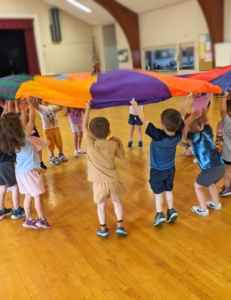Every parent/grandparent/guardian can probably relate to the following quote: “Somehow, me asking my child not to jump on the couch or slap her brother or throw a block at my head translates into more jumping, slapping, and throwing.” An article titled What Parents Say Vs What Kids Hear from Genmindful.com details the idea that “sometimes there is a disconnect from what we say to what our children hear.”
Rest assured: these miscommunications are not at all uncommon. It helps to understand the science behind a child’s developing nervous system when figuring out why they don’t understand, and more importantly what parents can do about it. One of the best ways to make adjustments is to practice, which gives children the chance to learn in the moment. With tomorrow being World Emoji Day (July 17), we’re diving into some of the examples from the article:
? Be quiet! (You’re too much right now)
Consider Instead: Encourage your child to be respectful with their voice rather than punished for doing what feels natural: gesture a volume dial, model being quiet by playfully whispering, have them mirror your tone (loud then quiet), and/or play the quiet game.
? Be careful! (The world is scary)
Consider Instead: Say what you want your child to do: “Get down” or “Walk on the sidewalk.” You can also ask questions: “What do we need to do before we cross the street?” allowing your children grow in their awareness of themselves and the world.
? Stop crying! (It’s unsafe to show emotion)
Consider Instead: Help your child “name it to tame it” and “feel it to heal it.” Let them know, “I see you’re sad, and I’m here for you.”
? You’re being too emotional! (My feelings are wrong)
Consider Instead: Pause to notice/manage your triggers as parents while staying curious about your child’s experience. Validate emotions, hold space, and make it safe to feel.
? You make me so mad! (You’re responsible for other’s feelings)
Consider Instead: Use an “I” statement: “I feel frustrated when I see the cat get hit because he could get hurt.”
Having boundaries in place that are consistent and discussed ahead of time incentivizes the behaviors desired. When children feel safe, powerful, and connected; they are more likely to play on the same team, and everyone wins when we work together! ?



